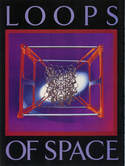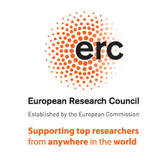|
Scientific Committee
Comité scientifique Abhay Ashtekar (Penn State University) |
Organizing Committee
Comité d’organisation Maciej Dunajski (University of Cambridge) |
|
Twistor theory was originally proposed by Roger Penrose as a geometric framework for physics that aims to unify general relativity and quantum mechanics. In this approach, spacetime is secondary with events being derived objects that correspond to compact holomorphic curves in a complex three–fold, the twistor space. The mathematics of twistor theory goes back to the 19th century Klein correspondence in projective geometry, but one of the unexpected spinoffs from twistor theory is its impact on modern pure mathematics, from differential geometry and representation theory to gauge theories and integrable systems.
Loop quantum gravity is a background-independent approach to the quantization of general relativity. It provides a compelling picture of quantum spacetime in terms of a collection of `atoms’ with discrete spectra, and the possibility of resolving the singularities of general relativity. Applied to cosmology and black hole physics, it has led to new ideas for the origin of the universe (a `Big Bounce’ replacing the Big Bang) and the final state of Hawking evaporation. The communities working in these two theories share both technical and a conceptual pillars, however they have evolved independently for many years, with different methods and intermediate goals. Some recent developments have weaved a possible new path of interaction: Collaborations between researchers in the two fields have started, with the potential to enrich each other and find new synergies. The aim of the proposed meeting is to bring together for the first time the two communities in a broad and comprehensive way, to strengthen this interdisciplinary overlap and foster new collaborations and developments, concentrating primarily on the geometric and general– relativistic aspects. Leading international researchers both in twistor theory and loop quantum gravity will have the opportunity to establish and consolidate the connections between the two areas of research, and to overcome problems at the forefront of both fields. |
Roger Penrose introduisit la théorie des Twisteurs pour offrir un nouveau cadre géométrique pour l’unification de la relativité générale et de la mécanique quantique. Dans cette approche, l’espace-temps devient secondaire, dérivé à partir d’objets qui correspondent à des courbes holomorphes dans une variété complexe, l’espace twistoriel. Les mathématiques de la théorie des Twisteurs, qui trouvent leur origine au 19ème siècle dans la correspondance de Klein en géométrie projective, ont eu un très grand impact dans les mathématiques modernes, de la géométrie différentielle à la théorie des représentations, en passant par les théories de jauge et les systèmes intégrables.
La gravitation quantique à boucles est également une tentative de quantification de la relativité générale, basée sur une description de la courbure de l’espace-temps utilisant des connexions de jauge. L’approche a produit une image claire de ce que pourrait être l’espace-temps quantique, tel une collection d’`atomes’ aux propriétés géométriques discrètes, sensée résoudre le problème des singularités de la relativité générale. Appliqué à la cosmologie et à la physique des trous noirs, cette approche propose de nouveaux paradigmes pour l’origine de l’univers (avec le Big Bang remplacé par un `Big Bounce’) et pour l’évolution finale du rayonnement de Hawking. Les deux communautés partagent des piliers à la fois techniques et conceptuels, mais elles ont évolué d’une façon indépendante pendant longtemps, avec des méthodes et buts intermédiaires différents. Des résultats récents ont tissé de nouvelles interactions possibles : des collaborations parmi les chercheurs des deux domaines ont commencé, avec le potentiel d’un enrichissement commun et de nouvelles synergies. Le but de cette conférence proposée est d’amener les chercheurs des deux communautés à se rencontrer pour la première fois de façon ample et cohérente, pour renforcer ce recoupement interdisciplinaire et favoriser des nouvelles collaborations et développements, en premier lieu sur les aspects géométriques et relativistes. Des chercheurs leaders en théorie des Twisteurs et gravitation à boucles auront la possibilité d’établir et consolider les connexions parmi les domaines de recherche, et de pousser plus loin l’état de l’art. |
Sergey Alexandrov (Université de Montpellier)
Bernardo Araneda (National University of Córdoba)
Abhay Ashtekar (PennState University)
Eugenio Bianchi (Pennsylvania State University)
Dirk Bouwmeester (UC Santa Barbara)
Peter Cameron (University of Cambridge)
Bianca Dittrich (Perimeter Institute)
Maciej Dunajski (University of Cambridge)
Maïté Dupuis (Perimeter Institute for Theoretical Physics, Waterloo)
Michael Eastwood (University of Adelaide)
Jordan François (University of Mons)
Florian Girelli (University of Waterloo)
Rod A. Gover (University of Auckland)
Jan Gutowski (University of Surrey)
Yannick Herfray (Université Libre de Bruxelles)
Lane Hughston (Goldsmiths College, University of London)
Jurek Kowalski-Glikman (University of Wrocław)
Kirill Krasnov (University of Nottingham)
Jerzy Lewandowski (University of Warsaw)
Jerzy Lukierski (University of Wrocław)
Lionel Mason (University of Oxford)
Thomas Mettler (University of Frankfurt)
Roger Penrose (Oxford University)
Alejandro Perez (Aix-Marseille Université)
Prim Plansangkate (Prince of Songkla University)
Carlo Rovelli (Aix-Marseille Université)
David Skinner (University of Cambridge)
George Sparling (University of Pittsburgh)
Simone Speziale (CNRS/ Aix-Marseille Université)
Aman Taghavi-Chabert (American University of Beirut)
Paul Tod (University of Oxford)
Paul Townsend (University of Cambridge)
Wolfgang Wieland (Perimeter Institute for Theoretical Physics, Waterloo)







